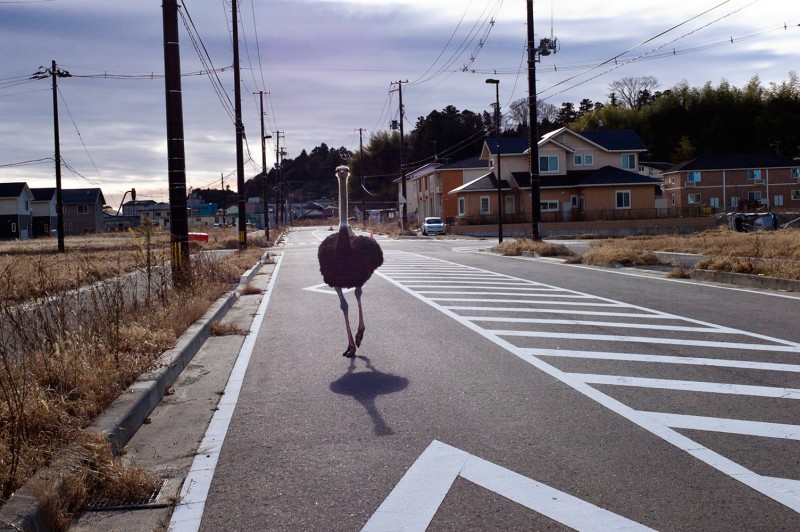Life without humans
Life without humans
Magdalena Solé
March 18, 2015

© Magdalena Solé, !Ostrich!, from the !Aftermath! series
The first of many visits I made to Japan was in 1991. Since then, the country has become my spiritual home. However, nothing prepared me for what I saw upon entering the abandoned zone around the Fukushima Daiichi Nuclear Power plant. Human time froze the day people within a 12-mile radius were evacuated. Life without humans continued. Tall grasses grew, feral farm animals and ostriches took over the carefully manicured land and homes. More than in other cultures, the Japanese heart is intertwined with the land of their ancestors. Being displaced is the greatest of disasters.
For most of us, we experience destruction by natural disaster through a TV. When you are actually there, the experience is vastly different. It engages all your senses. You can touch debris, smell the rot and decay, see the great swath of land touched by destruction and experience utter loneliness, standing in a formerly inhabited space that now lies empty – and you can not find relief by switching channel. All this adheres to your very soul. The earthquake and tsunami eradicated entire towns and killed thousands.”
From October 18 to 28, 2015, the photographer will run a workshop in Japan. Information on the programme can be found at: www.photoxpeditions.com.
Magdalena Solé+-
Born in Spain, Magdalena Solé is currently a New York City-based social documentary photographer. Her family moved to Switzerland when she was seven, and she now lives in New York and Vermont. Her projects span the globe; she has been widely exhibited and published. Her book New Delta Rising was released in 2012. More

© Magdalena Solé, !Ostrich!, from the !Aftermath! series
